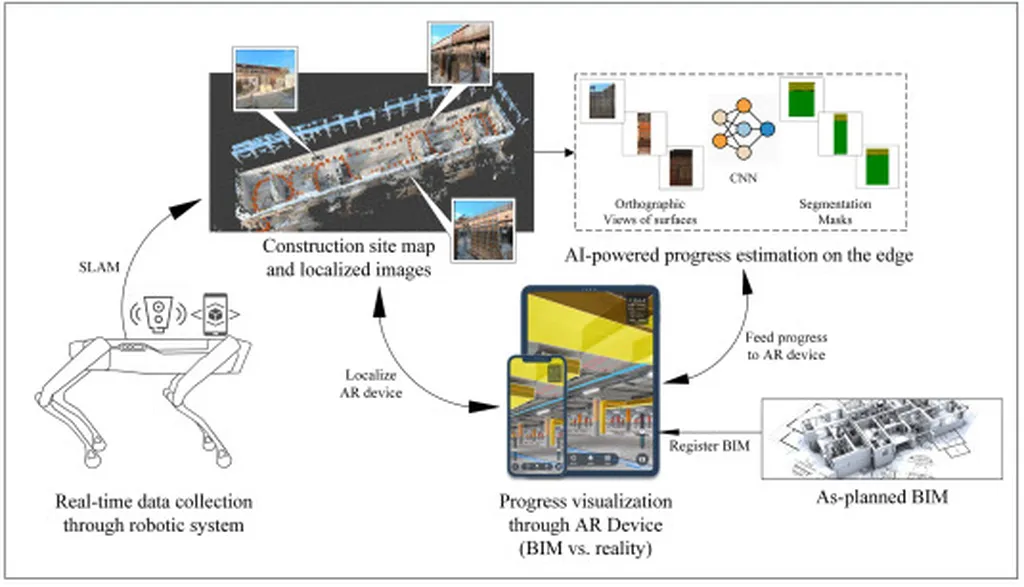In the ever-evolving landscape of construction technology, a groundbreaking study led by Wei-Liang Kuo from the Department of Civil Engineering at National Taiwan University is set to revolutionize how we approach site inspections. By integrating Building Information Modeling (BIM) with Augmented Reality (AR) and Visual Simultaneous Localization and Mapping (VSLAM), Kuo and his team have developed a prototype system that promises to enhance inspection accuracy and efficiency, even in offline environments.
The research, published in the Journal of Civil Engineering and Management, addresses critical challenges faced by engineers during construction inspections. Traditional methods often involve complex model manipulations and are susceptible to human error. Moreover, signal or internet connectivity issues can hinder positioning technologies, further complicating the process.
Kuo’s innovative approach leverages VSLAM to enable precise defect tracking and efficient model adjustments. The system employs a two-phase indoor positioning method: initial localization via visual markers and real-time tracking with VSLAM. This allows inspectors to quickly and effectively record construction defects as photographs with notes and their locations.
“We aimed to create a system that could assist site inspectors in performing quality management more efficiently and accurately,” Kuo explained. “The integration of BIM, AR, and VSLAM technologies has proven to be a significant step forward in achieving this goal.”
The commercial implications of this research are substantial, particularly for the energy sector. Construction projects in this industry often involve complex structures and stringent quality standards. The ability to conduct precise inspections offline can streamline operations, reduce costs, and enhance overall project management.
While the system’s performance is influenced by environmental factors such as lighting and marker placement, the insights gained from this study provide a solid foundation for future refinements. As Kuo noted, “Our findings highlight the potential of this technology and offer valuable directions for further development.”
The integration of BIM, AR, and VSLAM represents a significant advancement in construction site inspection methodologies. This research not only addresses current challenges but also paves the way for future innovations in the field. As the construction industry continues to embrace digital transformation, technologies like those developed by Kuo and his team will play a pivotal role in shaping the future of construction management.

